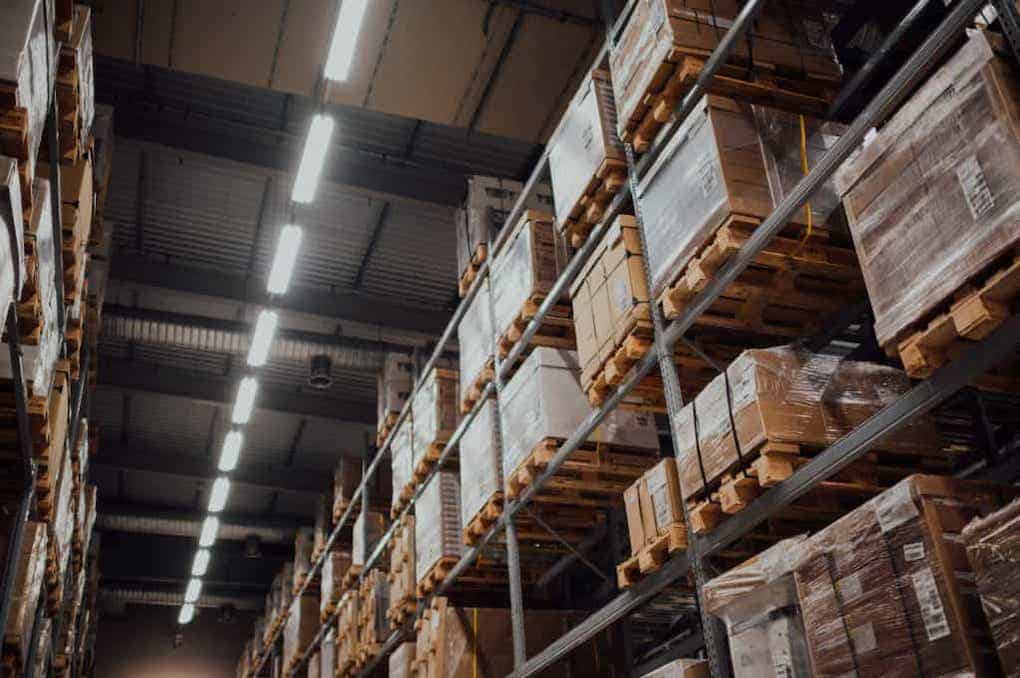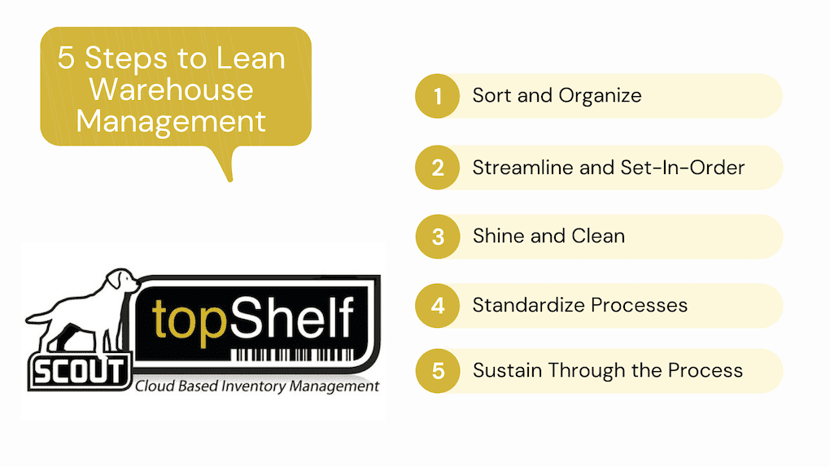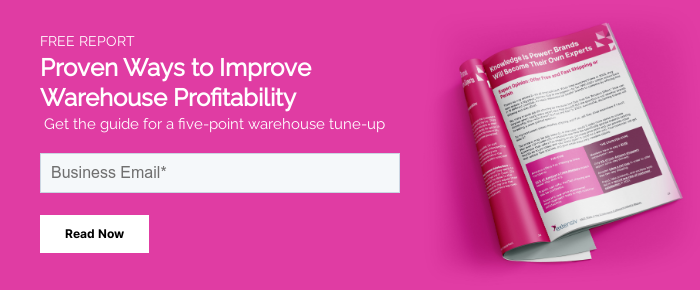How efficient is your warehouse?
Having a lean warehouse is the difference between making a good profit with low overhead and struggling to make ends meet because of excess inventory that isn’t selling. But how can you optimize profits and remain lean when it comes to warehousing?
We’re here to help with these lean warehousing principles for 2022.
What Is Lean Warehouse Management?
So what even is lean warehouse management? It’s not a term or idea that is quite as easily defined as some other terms that we regularly use in the warehousing and e-commerce industry.
Lean warehouse management is the process of developing operations within a warehouse that bring resource consumption down without sacrificing or lowering the level of productivity that the warehouse is working at. A lean warehouse aims to ensure your team is always working as efficiently and effectively as possible.
By doing this your warehouse will become more profitable, less prone to burned-out employees, and in turn able to retain more employees. You can learn more about warehouse employee retention here.

Why Implement Lean Warehousing?
There are several reasons you might consider implementing lean warehousing. Here are some of the biggest advantages to those that are managing a warehouse every day:
- Reduced operational costs
- Better coping with the pressures of shorter lead times
- Increased customer satisfaction by enhancing the number of perfect orders
- Meeting the target of same-day and next-day delivery options
- Better control during high employee turnover and the rising cost of labor
- Manage multiple delivery channels
- Better manage an ever-increasing number of SKUs
- More intentional use of workspace
- Control over seasonal and fluctuating demands
By successfully implementing lean warehousing technology and optimizing the principles we’re going to talk about next, you’ll be able to see these advantages begin to take shape. Now for the principles, you need to start developing a lean warehouse operation!
The 5 Lean Warehousing Principles
Each of these principles broken up into individual steps can slowly work together to make your warehouse a fully optimized and effective business.

1. Sort and Organize
Sort is short for sorting and organizing your warehouse efficiently. Efficient organizing is single handily one of the most important things that you can do for your warehouse. There are many different ways to approach sorting and organizing, but it’s not about how you do it as much as it is about ensuring that you do intentionally do it. Ideally, you’ll break down every one of your warehouse operations into types of tasks and then reduce them down to the very least amount of steps possible. Doing this will help to ensure your warehouse runs efficiently. Here are 15 warehouse organization tips to help you maximize efficiency.
Proper sorting techniques can also help to ensure that you don’t have any obsolete inventory. This will help your warehouse maximize profits.
2. Streamline and Set-In-Order

After you’ve got each of your warehouse operations down to the minimum needed for successful operation, you can arrange warehouse inventory, storage space, and equipment so that each task takes the shortest amount of time possible to complete. When you find different areas that you can consolidate, lay them out in ways that allow all of your operations to be optimized.
An example of this is placing heavy or fragile items closer to loading docks or in places where they would need the minimal amount of movement to reach the area where they are shipped from. Reducing handling and steps for different warehouse processes will help you and your employees get more done every day. It might even allow you to have fewer employees.
3. Shine and Clean
Shine is a reference to the maintenance and upkeep that goes into having a lean warehouse. If you’re not keeping your warehouse clean, up to date, and maintained, you won’t be able to operate at your most efficient capacities. The ideal way to optimize the shine of your warehouse operations is to create a maintenance and cleaning reporting schedule. Plan for big all-team quarterly clean-ups and weekly or monthly smaller clean-ups that help to ensure all of the systems are in working order and that your facility is always kept clean.
There’s really nothing worse than having cardboard boxes and pallets piled up, and no one on your team willing to take responsibility for keeping things clean. Assigning cleaning on a rotation or an all-team basis can help to take care of this.
4. Standardize Processes
Standardize is all about creating uniform systems and training so that each and every one of your employees knows all of the processes. Communication and uniformity throughout the operations in the warehouse will help your team complete tasks more efficiently. The best way to ensure that there are proper standardized processes in place is by having regular training and an in-depth onboarding process for new employees. Without ensuring that employees are all trained well, you won’t be able to ensure that every process is known by each employee.
Warehouses have a lot of paperwork, labels, and packaging requirements. Keep everything all standardized in order to optimize as a lean warehouse.

5. Sustain Through The Process
Finally, you’ll need to sustain all of these individual practices in order to continue your lean warehousing practices. Continually assess each one of these five principles so that you’re keeping your warehouse as efficient and effective as possible. You’ll need to make improvements to your lean warehousing strategies continually. This is especially true as your business continues to grow and scale over time.
The 5s system isn’t always as thorough as some warehouses will need to be in their lean warehouse management strategy. But, it is a great starting point for all warehouses, and these lean practices do, in many ways, apply to all different types of businesses. Keeping a lean and focused approach is essential to doing good work, keeping team members productive, optimizing profits.
Bonus: Safety
Safety isn’t a part of the traditional five steps that make up lean warehouse management, but it can be considered one of the most important parts of running any business. We all want to think that no one will get hurt at work, but if we don’t put the right processes in place, there’s no way to ensure that safety is prioritized in the workplace. Here are a few great ways to focus on safe practices in your warehouse:
- Regularly conduct risk assessment within different positions and tasks that employees perform.
- Review your warehouse layout and design to ensure that all walkways, stairs/ramps, racking, escape routes, etc., are safe.
- Create a fire emergency plan that includes:
- Inform employees on fire/emergency exits and evacuation procedures.
- Ensure that everyone knows the locations of fire extinguishers and emergency water hoses.
- Track all visitors and employees that are on-site at any given time.
Having a safe workplace with fewer accidents will increase your warehouse’s profitability and keep everything running more efficiently. When employees get hurt, it’s going to cost you and could cause your warehouse to fall behind on shipping dates. Keep that from happening by cross-training and standardizing, as we talked about above.

How to Implement Lean Warehousing Principles
Before you undergo a reshaping of your warehouse and management strategy, you should plan out when and how you’ll undergo this change. There are a few key points that you want to make sure you touch on.
1. Inform employees of upcoming changes: This is key if you want to be able to move somewhat quickly through the process without explaining yourself excessively. Make sure your employees know what the process will entail so they’re on board with it.
2. Create a schedule or timeline: By having a timeline for when different things need to be completed, you can ensure that the process is accomplished in an efficient manner.
3. Use managers to help communicate to employees and develop strategies: Managers within your warehouse can help make this process run as smoothly as possible. Bring them in on every part of the planning and execution.
4. Implement: After you’ve planned out how you’re going to work through all five lean warehousing principles, you can dive in and start implementing.
After you’ve gone through the five lean warehouse principles and optimized for safety, the are a few more steps you can take.
One such step is implementing warehouse management software and inventory management software in your system. Not only will this allow you to manage your employees and inventory better, but it will also help your team stay on time, on task, and ensure that all of your processes are kept up to date.
How to Use Extensiv Warehouse Manager to Optimize Your Lean Processes
Extensiv Warehouse Manager is a warehouse and inventory management solution that is designed to fit within your workflow easily. It can be optimized and integrated with a number of software applications so that you can automate different processes that would have otherwise taken an employee’s time. Possible integrations include Shopify, Quickbooks, Salesforce, Magento, and many more!
When using Extensiv Warehouse Manager alongside your online listings, it can keep inventory numbers up to date, help remind you when you need to order more stock, and ensure that every shipment stays on time. The program will also help you to pick, pack by allowing you to create SKUs and barcodes that can correspond to where an item is located in your warehouse. Take lean warehousing to the next level by reaching out to Extensiv Warehouse Manager for a free demo!








